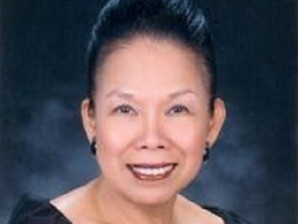CHEd: There’s gender gap in college, work
More women finish college than men in the Philippines, but this has yet to be reflected in the work force.
Filipino women’s gains in higher education “do not necessarily translate to social and economic advancement,” said Commission on Higher Education (CHEd) Chairperson Patricia Licuanan, as the work force continues to be dominated by men.
This even as women have outnumbered men college graduates for over a decade, data from the National Statistics Coordination Board (NSCB) has shown.
“There are more males employed than females. Women still lag behind in entering higher paying and more regular jobs. Women generally occupy lower positions in the occupational hierarchy. The average daily basic pay of women has [also] been lower than men,” Licuanan told the Philippine Daily Inquirer.
The CHEd chairperson was asked her take on the gender gap in higher education, which is not unique to the Philippines but is apparently a global trend.
Article continues after this advertisementThe NSCB figures showed that 269,877 of 481,862 Filipino college graduates (56 percent) in 2010 were women. Male graduates numbered 211,985 or 44 percent of the total. This even while there were half a million more men than women aged 20 to 34 (11.9 million men, 11.85 million women) in the population.
Article continues after this advertisementFreedom to play
Licuanan said this may be attributed to the way girls and boys are brought up, where girls are taught to do chores around the house early while boys “are allowed more freedom to play.”
“This early socialization may account for the fact that girls and later on young women are ‘better students,’ i.e. they work harder, perform better and are less likely to drop out of school,” said Licuanan.
On the flip side, she said, the dropout rate among male students should be looked into as “there may be greater pressure on males to get jobs even before graduation.”
The difference between female and male graduates was even greater in previous years: 56.8 percent female graduates against 43.2 percent male graduates in 2006 and 61 percent female graduates against 39 percent male graduates in 2001.
“Women have been equipping themselves with higher education better than men. However, the gender disparity has narrowed with the share of women graduates going down from 61 percent in academic year 2000-01 to 56 percent in AY 2009-10,” said the NSCB report which was released recently.
The report, titled “Worrisome Trends Toward the Deterioration of our Human Capital,” also noted the slow rise in the number of graduates of higher education courses, especially in critical studies like the sciences, engineering and education.
“Women probably still have some catching up to do, but if this disparity in favor of women persists, shouldn’t men start preparing to give up their status as household head in the future?” the NSCB report said.
Women remain underrepresented
And the women may indeed have to catch up as they remain underrepresented in positions that involve decision-making, noted Licuanan.
“In the Philippines, there is a wide gap in the participation rates of men and women in decision-making. Gender tracking, whereby women are channeled into careers that are basically extensions of their domestic responsibilities while men acquire more marketable skills and enjoy more earning power, only aggravates the already unequal opportunities available to women,” Licuanan said.
Courses with high female enrollment include liberal arts, home economics, nursing and teaching, said Licuanan. Men are inclined toward the law, agriculture, engineering and natural sciences.
But once out of school, the gender disparity swings back to the men’s favor.
For instance, she noted, more women are enrolled in education courses and there are more female teachers.
“However, men outnumber women in the top-level posts of the educational system. Only 15 percent of state university and college presidents are women,” Licuanan pointed out.
